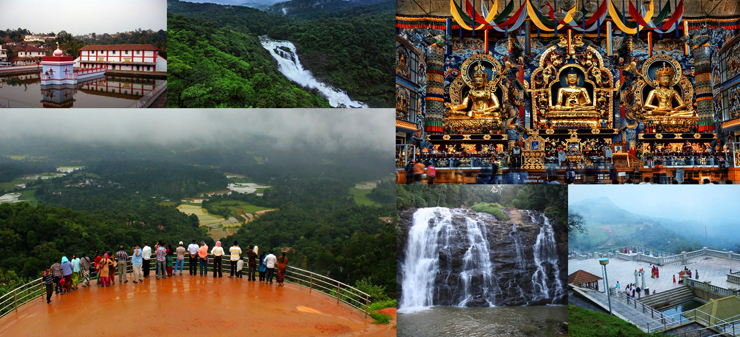About Coorg

Coorg officially known as Kodagu is one of the districts in the Karnataka state in southern India. Despite being the least populated district, Coorg is known in the world for coffee and its rich culture and heritage.
Coorg is located on the eastern slopes of the Western Ghats, bordered by the Dakshina Kannada district to the northwest, Hassan district to the north, Mysore district to the east, the Kannur district of Kerala to the southwest and the Wayanad district of Kerala to the south. The principal city, and district capital of Coorg is Madikeri or Mercara. The city has a population of around 30,000. Other significant cities in the district are Virajpet (Virarajendrapet), Kushalanagara, Somwarpet and Gonikoppal.
Agriculture is the main occupation of the people in Coorg. Geologically, paddy fields are found on the valley floors, with Coffee and pepper agroforestry in the surrounding hills mainly near Madikeri. The coffee agro-forestry systems of Kodagu are one of the richest agro-forest in the world, with about 270 species of shaded trees inventoried according to the publications of CAFNET project. In those coffee agro-forests are also cultivated spices like black pepper, cardamom, vanilla, rubber, teak, cocoa and oranges. Kodagu is also known for its forest honey. Weather hugely contributes towards economy. In July and August, rainfall is intense, and there are often showers into November. The highest temperatures occur in the month of April and May.
Coorg is rich in wildlife and has three wildlife sanctuaries and one national park: Brahmagiri, Pushpagiri Wildlife Sanctuaries and the Nagarhole National Park, also known as the Rajiv Gandhi National Park. Some of the common wild animals that are found in the forests of Coorg include the asian elephant, tiger, leopard, dhole, gaur, boar, and several species of deers. Coorg also offers a wide variety of birds; roughly around 300 birds have been sighted and reported over the years.
Coorg is home to many communities with diverse ethnic origins, with Kodavas being the main ethnic group. Other communities are the Kodagu Gowda and Muslims. One-fifth of a total population of over 500,000 is the Kodava community, which speaks Kodava language. The Kodavas Hindus are traditionally ancestor worshippers with a martial tradition, hence, may be called Kshatriyas. Some of the festivals celebrated by Kodavas are Kailpodhu, Kaveri Sankramana and Puthari.
Food is a major part people's life in Coorg. It is majorly influenced by geography, history and culture of its people. Their cuisine is predominantly non-vegetarian, owing to the fact that they always ate what was available off the land. Pandi curry (Pork curry) is one of major delicacies of Coorg. People in Coorg are essentially rice eaters as it is grown abundantly in the fertile valleys.Most of the authentic Coorg dishes are rice based, some of them being Akki Rotti, Kadumbuttu and Noolputtu.

Tourist Attraction